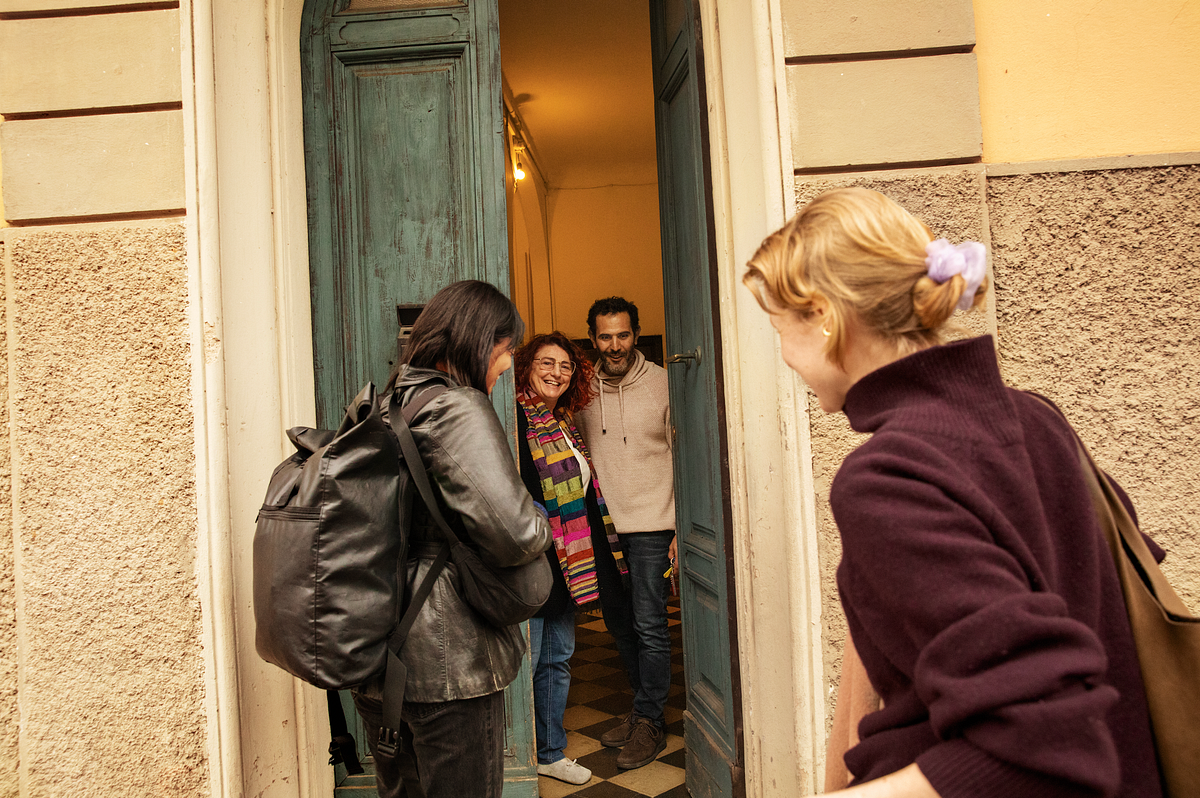innsikt - Software Development - # Implementing Engaging 3D Animations for the Host Passport Feature in Airbnb's iOS App
Bringing the Host Passport to Life: Airbnb's Innovative Approach to Enhancing Host-Guest Connections on iOS
Grunnleggende konsepter
Airbnb's Host Passport feature enables hosts to introduce themselves to guests, fostering a more personal connection, through a delightful 3D animation experience on the iOS platform.
Sammendrag
The article discusses how Airbnb implemented the Host Passport feature in their iOS app, which allows hosts to introduce themselves to guests through an engaging 3D animation.
Key highlights:
- Airbnb opted to use UIKit for the passport animation, as SwiftUI did not have the necessary APIs for custom transitions and navigation patterns at the time.
- The complexity of the animation lies in coordinating multiple moving parts, such as rotating the passport around the left edge to achieve a page-turning effect, without disrupting other transforms.
- Airbnb used a compound view approach, with a front page and two inside pages, to create the impression of a book-like passport.
- To integrate the 3D animation with Airbnb's declarative animation framework, the team created a custom snapshot that could play the page flip animation alongside the shared element transition.
- Precise timing and easing functions were used to ensure a natural and delightful animation experience, with keyframes controlling the start and stop points of individual animations.
The article provides insights into the technical challenges and solutions involved in bringing the Host Passport feature to life on the iOS platform, showcasing Airbnb's attention to detail and commitment to delivering a seamless and engaging user experience.
Customize Summary
Rewrite with AI
Generate Citations
Translate Source
To Another Language
Generate MindMap
from source content
Visit Source
medium.com
Animations: Bringing the Host Passport to Life on iOS
Statistikk
No key metrics or important figures were provided in the content.
Sitater
No striking quotes were found in the content.
Viktige innsikter hentet fra
by Anne Lu klokken medium.com 05-07-2024
https://medium.com/airbnb-engineering/animations-bringing-the-host-passport-to-life-on-ios-72856aea68a7
Dypere Spørsmål
How did Airbnb's approach to the Host Passport animation on iOS differ from their implementation on other platforms, such as Android or web?
Airbnb's approach to the Host Passport animation on iOS differed from other platforms like Android or web primarily due to the choice of technology used. While Airbnb had mostly transitioned to using SwiftUI for building new components and screens in their app, they opted to use UIKit specifically for the passport animation on iOS. This decision was influenced by the lack of SwiftUI APIs supporting custom transitions and navigation patterns at the time, as well as the need to support older iOS versions. By leveraging UIKit for the iOS implementation, Airbnb was able to tap into the framework's capabilities for creating smooth and polished animations, which were essential for bringing the Host Passport to life in a visually appealing and engaging manner.
What were the trade-offs or limitations that Airbnb faced in using UIKit for the passport animation, compared to potentially using SwiftUI in the future?
While using UIKit for the passport animation on iOS allowed Airbnb to achieve the desired level of pixel accuracy, fluidity, and performance, there were trade-offs and limitations compared to potentially using SwiftUI in the future. One major limitation was the lack of support for custom transitions and navigation patterns in SwiftUI at the time of implementation. This meant that Airbnb had to rely on UIKit for handling screen navigation and transitions, which added complexity to the animation implementation. Additionally, since SwiftUI had introduced keyframe timing for animations in a later iOS version, Airbnb's decision to support older iOS versions limited their ability to leverage this feature. Despite these limitations, Airbnb was able to work around them by combining UIKit with their in-house declarative transition framework to create complex animations for the Host Passport on iOS.
How might Airbnb leverage emerging technologies, such as augmented reality or machine learning, to further enhance the Host Passport feature and the overall host-guest connection experience?
Airbnb could leverage emerging technologies like augmented reality (AR) and machine learning (ML) to further enhance the Host Passport feature and the overall host-guest connection experience. By integrating AR capabilities, Airbnb could offer guests a more immersive way to explore and interact with the Host Passport, allowing them to virtually tour the host's space and get a better sense of the accommodation before booking. This could enhance transparency and trust between hosts and guests, leading to more informed booking decisions. Additionally, ML algorithms could be used to personalize the Host Passport experience based on guest preferences and past interactions, providing tailored recommendations and enhancing the overall user experience. By incorporating these technologies, Airbnb can create a more engaging and personalized platform that strengthens the connection between hosts and guests.
0
